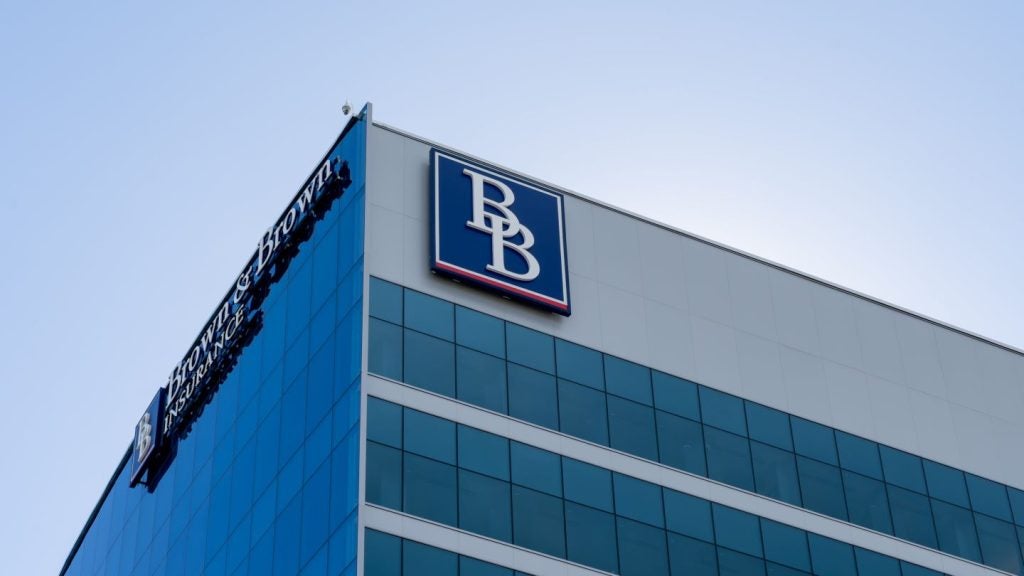Brazils life insurance and pensions market is the most highly regulated in Latin America, and insurance penetration rates lag behind more developed countries. However, Brazils buoyant economy and the growing numbers of middle-class consumers bode well for life insurers, reports Robin Arnfield.
Having come through the 2008-2009 global financial crisis largely unscathed, Latin Americas economic powerhouse Brazil is booming. Driven by rising consumer spending and a recovery in exports, Brazils GDP grew at a year-on-year rate of 5% in the fourth quarter of 2010 and continued to sustain a solid pace in the first quarter of 2011, growing by 4.5%.

Access deeper industry intelligence
Experience unmatched clarity with a single platform that combines unique data, AI, and human expertise.
 Commenting on the countrys economic progress, a recent Deutsche Bank Research report notes: “Brazils medium-term economic prospects, underpinned by solid fundamentals, favourable demographics, and natural resource exports, are bright.”
Commenting on the countrys economic progress, a recent Deutsche Bank Research report notes: “Brazils medium-term economic prospects, underpinned by solid fundamentals, favourable demographics, and natural resource exports, are bright.”
Underscoring this optimistic view, president of Brazils central bank Alexandre Tombini said in a comment on first quarter 2011 GDP growth: “[The figures] confirm that the Brazilian economy is in a cycle of sustained expansion, at a pace that is harmonious with internal and external balance.”
Notably, Brazils economic strength has also boosted its currency, the real, significantly. Over the past two years the real has appreciated by some 23% against the euro and 26% against the US dollar.
Low insurance penetration

US Tariffs are shifting - will you react or anticipate?
Don’t let policy changes catch you off guard. Stay proactive with real-time data and expert analysis.
By GlobalData The giant in Latin Americas insurance market, in 2010 Brazils life market, accounted for 60% of total life premium income in the region, according to Swiss Re. In the non-life market Brazils share stood at 42% in 2010. Mexico ranked a distant second with a 16% share of the life market and a 13.6% share of the non-life market.
The giant in Latin Americas insurance market, in 2010 Brazils life market, accounted for 60% of total life premium income in the region, according to Swiss Re. In the non-life market Brazils share stood at 42% in 2010. Mexico ranked a distant second with a 16% share of the life market and a 13.6% share of the non-life market.
But despite its size, a challenge and opportunity for Brazilian insurers is the very low penetration of life and pensions products.
“Total life, pension, and P&C premiums represent 3% of Brazilian GDP, compared to 10% in the US, and 4% in Chile,” Rodolfo Nobrega, vice-president and senior analyst at Moodys Brazil, tells LII.
Fitch Ratings in a December 2010 report Brazilian Insurance Sector: Annual Results and Prospects predicted that total Brazilian life insurance, pension and general insurance premiums will rise to 7% of GDP in the mid to long term, as Brazils economy continues to expand. Fitch also noted that in recent years, the largest insurers have been able to maintain good levels of profitability, at above 20% per year.
“Life insurance is concentrated in Brazils higher-income segments, the A and B classes,” says Franklin Santarelli, Fitchs MD, Latin American financial institutions. “Just 12m individuals have life insurance in Brazil out of a total population of 198m. 40m Brazilians have formal jobs, so theres a large group of people in the formal economy who lack life insurance, representing an opportunity for insurers.”
Brazil divides its population into five socio-economic categories with the poorest people in category E and the most affluent in category A. According to the Centro para Regulação e Inclusão Financeira (Centre for Financial Inclusion and Regulation), classes C and D combined represent 128m potential insurance buyers, and class E 35m potential buyers.
Banking the unbanked
 A barrier to growth in the life and pensions market is the large percentage of the population which is unbanked. In tandem with low banking penetration is a low household savings rate, at least by developing market standards. According to Deutsche Bank Research, Brazils domestic savings rate averaged 16.9% of GDP between 2001 and 2010, and 17.8% during the second half of the decade. By comparison, Chiles savings rate is currently 27% of GDP.
A barrier to growth in the life and pensions market is the large percentage of the population which is unbanked. In tandem with low banking penetration is a low household savings rate, at least by developing market standards. According to Deutsche Bank Research, Brazils domestic savings rate averaged 16.9% of GDP between 2001 and 2010, and 17.8% during the second half of the decade. By comparison, Chiles savings rate is currently 27% of GDP.
However, banking the unbanked is a high priority in Brazil. In collaboration with the big banks, which own the largest life insurers, the Brazilian government is working to increase banking penetration among low-income groups.
Brazil is also experiencing growth in the ranks of its middle class. For example, according to Associação Brasileira das Empresas de Cartões de Crédito e Serviços (Brazilian credit card services trade association), in recent years 30m previously unbanked consumers have migrated from socio-economic class D to C.
Santarelli said emergence of new middle-class consumers will in the long-run be positive for the insurance industry, as these consumers enter the banking system.
“This is because Brazils insurance market is characterised by bancassurance,” he says.
“But, while were seeing an increase in bank accounts and lending to newly-banked consumers, we arent yet seeing a commensurate increase in insurance sales to them. If you get a bank account, you are offered a credit card and a loan, and later on the bank will sell you insurance, for example creditor insurance. But, initially, you may just take out a payroll loan that is too small to need insurance.”
A 2010 survey by UK consultancy Finaccord found that 37.6% of all Brazilian credit card products offered creditor insurance and 29.5% offered accidental death/disability insurance.
“With the continual expansion in the Brazilian credit card market, I expect to see growth in related insurance sales,” says Finaccord analyst Simon Tottman.
Santarelli noted that while Brazilian insurers offer a wide range of different life products, they only actively market traditional individual life policies.
“Three-quarters of life insurance sold to individuals is universal life related to loans or mortgages,” he says. “The Brazilian life insurance market is much simpler than its US counterpart, due to Brazils low levels of insurance penetration. Brazilian life insurers are plain-vanilla companies of the type seen in the US 50 years ago. They dont invest in derivatives, they dont have leverage, they just sell a product, create a reserve, and assemble the assets to support that reserve.”
An area on which Santarelli believes life insurers must focus is the development of microinsurance products for low-income segments.
“Thirty percent of the Brazilian population is on the poverty line and will buy microinsurance life products, provided the prices are very low,” he says. “But, for thems of microinsurance policies you will sell a year, you need very robust IT systems.”
Nobrega noted that because of the inherent characteristics of microinsurance protection low limits coverage for low-income consumers risk exposure from microinsurance should not significantly affect insurers overall profitability and capital adequacy.

Pensions
There are two primary approaches to pensions saving in Brazil. Employees may be offered enrolment in a closed corporate pension plan which is administered by a not-for-profit legal entity. Or, alternatively, they may save for their retirement in an open pension plan offered by an insurer.
There are two main vehicles, both of which offer tax incentives to contributors:
- PGBL (Plano Gerador de Benefícios Livres/plan generating free benefits) similar to a 401(k) plan in the US;
- VGBL (Vida Gerador de Benefícios Livres/life generating free benefits) a combination of life insurance and survivors benefit contracts.
“Whether firms offer group or individual pensions depends on their size,” says Felinto Sernache, leader of US consultancy Towers Watsons benefit segment in Brazil. “From a cost perspective, firms with up to 200 employees are better off with PGBLs or VGBLs. Larger firms opt for group pensions.”
Nobrega says that in 2004/05 annuity purchases and pension premiums represented 28% of the total insurance (life and general insurance) market.
“By 2009, annuity purchases and pension premiums had grown to 40% of the total market,” he says. “So pension premiums have nearly doubled since 2004. The growth of the Brazilian insurance market is driven by VGBL and PGBL sales, which is why the big life insurers make good money.”
According to Federação Nacional de Previdência Privada e Vida (National Federation of Private Pensions and Life), in the first four months of 2011, total VGBL contributions rose by 16.12% year-on-year to BRL12.6bn ($7.95bn). Total PGBL premiums rose by 14.77% to BRL1.9bn in the same period. The Federation says the rise in premiums is due to the greater number of C class consumers who are now able to save.
Excluding health insurance, the total Brazilian insurance market grew by 16% to $53bn in 2010, says Santarelli.
“Car insurance accounted for 21% of total premiums in 2010, traditional life 13%, VGBL 38%, PGBL 6%, and P&C the remainder. The health insurance market was worth $7.4bn in premiums in 2010.”
Swiss Res data shows a slower growth rate for the entire market in 2010 (10.3%) but higher total premiums of $64bn. Swiss Re put growth in the life insurance market at 12.6% to $33bn. In real, the reinsurer reported that premium income had increased by 18.3% to BRL58.52bn.
Restrictions
“Pensions are highly regulated,” says Nobrega. “Policyholders can only put up to 49% of their VGBL or PGBL into equities. For young people, that limit is too conservative, as they have a longer period to retirement than middle-aged people.”
Employees can invest up to 12% of their gross salary into VGBLs or PGBLs.
Life-time annuities are not fixed-rate, which exposes retirees to the risk of fluctuations in interest rates. However, annuities are readjusted once a year based on Brazils inflation index. Brazils inflation rate is currently at about 6%.
Sernache explained that because after the death of the annuity-holder and their spouse, annuities are lost, Brazilians prefer the two alternative retirement options: taking a lump-sum benefit paid as a percentage of the account balance, and taking an annuity during a fixed number of years, for example 15 years. With a lump-sum payout, the money goes into the familys estate on the death of the parents.
“Where the benefit is paid as a percentage of the account balance or during a fixed number of years, benefits are readjusted on a monthly basis according to the insurers investment return,” Sernache says.
Unlike the UK, for example, where retirees buy annuities from the provider of their choice, the Brazilian insurer selling a pension policy has to provide an annuity to the pension policy-holder.
“Insurers assume the risk of their annuities, they dont outsource annuities to a third party,” says Sernache.
While funds invested in private closed company pension schemes are protected, there are no guarantees for VGBLs and PGBLs.
“Company pension schemes have trustees who safeguard the funds in the event that the pension provider collapses,” says Sernache. “But there are no trustees for VGBLs and PGBLs.”
Currently, the PGBL and VGBL markets are in the accumulation phase, so the risks relating to annuities will appear in 10 to 15 years time, Nobrega estimates.
Concentrated market
“The life insurance market is highly concentrated,” says Santarelli. “The 10 largest players have 80% of premiums, leaving the remainder to 122 smaller insurers. This results in significant fragmentation and lack of efficiency, but theres no incentive for the big players to buy the smaller firms due to their lack of capital and resources.”
Bancassurance is the largest distribution channel for life insurance and private pensions in Brazil, with the largest banks dominating the market.
Nobrega said Bradescos subsidiary Bradesco Vida e Previdência Seguros is the leader, followed by Itaú-Unibancos Itaú Vida e Previdência; Brasilprev Seguros e Previdência, a pension and wealth management joint venture between Banco do Brasil and US insurer Principal Financial Group, Santander Seguros; and HSBC Vida e Previdência.
“Bradesco is one of the most highly respected bancassurance models in the world,” Santinelli notes. “30% of its income comes from life insurance.”
Santinelli continued that foreign players have 20% of the total insurance market.
“Foreign insurers tend to form alliances with Brazilian banks,” he says.
For example, in 2010, Spanish insurer Mapfre formed a personal insurance joint venture (including life insurance but excluding pensions) with Banco do Brasil, which wants to expand aggressively in life insurance.
In another example, in February 2011, Swiss insurer Zurich Financial Services agreed to take a 51% stake in Spanish bank Santanders life insurance, pension and general insurance operations in Brazil, Mexico, Chile, Argentina and Uruguay.
SulAmérica, a Brazilian insurer in which ING has a 36% stake, does not own a bank, but has a substantial independent broker network plus distribution deals with banks such as HSBC and Santander. In May 2011, its chief financial officer Arthur Farme dAmoed Neto told Bloomberg that the insurer wants to make acquisitions in Brazil. SulAmérica is the second largest Brazilian health insurance company, and the largest independent insurance group.
Banks without an insurance subsidiary sell insurance products from different providers, says Santinelli.
“Citibank Brazil sells products from MetLife, which has a presence in the Brazilian group life market,” he adds.
Regulations
Summing up the Brazilian regulatory environment, Franklin Santarelli, MD of Latin American financial institutions at Fitch Ratings, observes: “Brazil has one of the most restrictive insurance regulatory regimes in Latin America.”
And they are set to get tougher, according to Sernache. He explained that solvency rules are being tightened in Brazil for insurers. Brazils insurance regulator Superintendência de Seguros Privados (Superintendency of Private Insurance) is moving to a Brazilian version of Solvency II, the risk-based regulations for insurers operating in the European Union.
Nobrega explained that currently Brazilian regulatory requirements for insurers minimum retained capital are very low.
“All the insurers are well above the minimum capital, but that doesnt mean they are well capitalised. Moving to Solvency II will increase insurers need for capital. Life insurers ROE [return on equity] is strong, but this is not necessarily a correct view of what the risk is, as currently the regulatory capital requirement is low.”
Brazilian insurers have to keep all their liabilities and assets in real, which, given the strength of the currency, is positive. However, the regulator requires insurers to put their reserves into Brazilian government bonds or short-term deposits with Brazilian banks, which limits their potential for investment growth.
“Above the regulatory capital reserve, insurers have more flexibility, but their investments are still highly regulated,” Nobrega says.
Santarelli said that although Brazilian insurers are allowed to invest in equities, most do not have an equity position.
“At Bradesco Seguros, for example, around 80% of its total invested portfolio is made up of government securities,” he says.
There are no government guarantees against the failure of Brazilian banks or insurers.
“The only protection is that when an insurer is liquidated, its technical reserves relating to life insurance must be paid first,” says Santinelli.
“But when an insurer fails, this tends to be due to mis-management and no assets are left. Brazilians are increasingly using pensions and life insurance as savings vehicles, so, if an insurer fails, this will affect a lot of people. The regulator will be forced to tighten up the rules.”
The future
Sernache says that 80% of total Brazilian pension funds (including VGBLs and PGBLs) are invested in fixed-income assets, the majority in Brazilian government bonds.
“The remainder is invested in variable-income assets,” he says. “This mix is due to the very high interest rates prevailing in Brazil.”
Currently, the interest rate is 12.25% on treasuries, while inflation is running at 6%, giving insurers a 6% positive spread.
Interest rates are expected to fall in Brazil in the next few years, due to a predicted decline in inflation. This will affect how pension funds invest their assets, Sernache noted.
“They will be forced to invest more creatively within the limits of current regulation to achieve the same level of return
as they get now due to high interest rates,” Sernache comments. “But while they get such a good rate of return with government bonds, pension funds will stick with government bonds.”







